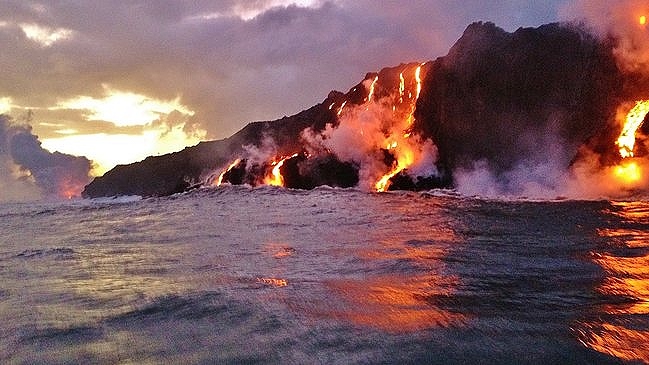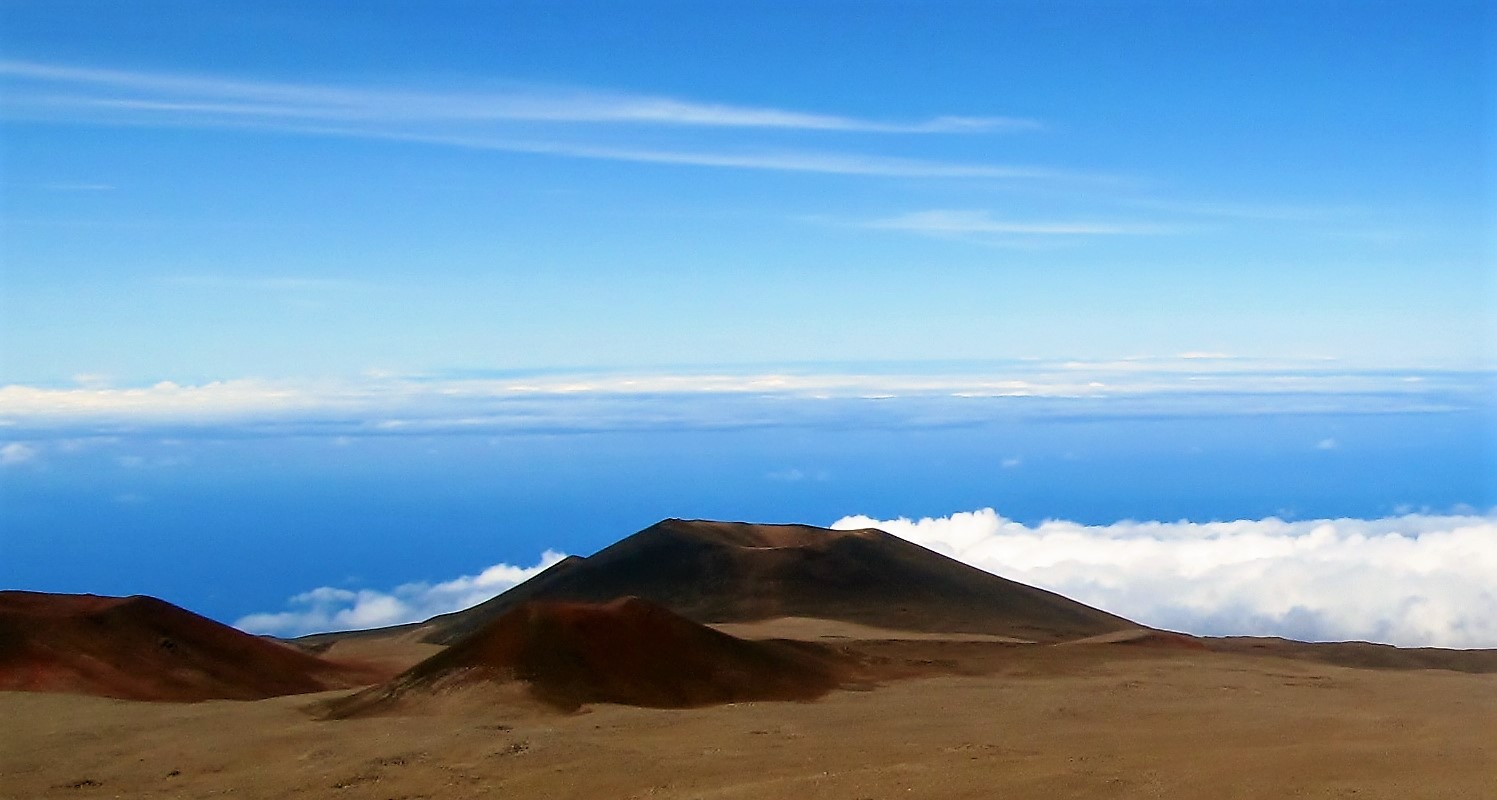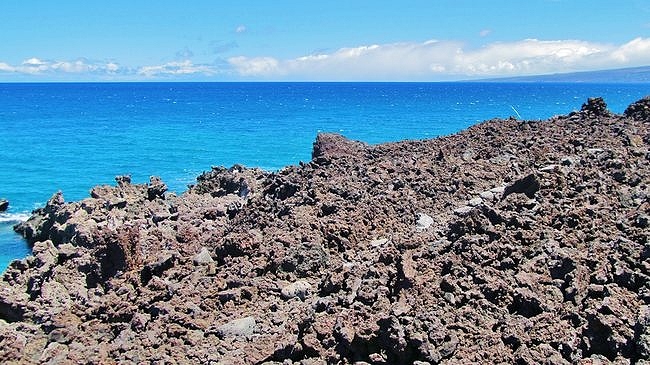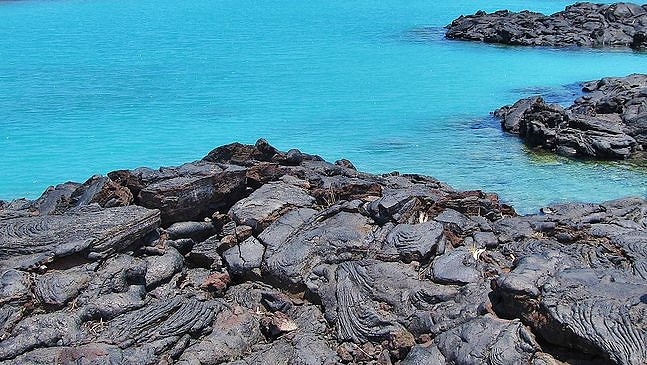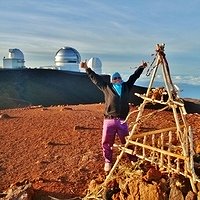Creation of Hawaii Island Volcanoes
The Hawaiian Emperor Chain
Just how Hawaii Island volcanoes are formed, and the creation of the extensive island chain, is a fascinating story. Hawaii is geologically unique, formed by a "hotspot" in the middle of the Pacific Plate.
Tectonic Plates
The Pacific Plate is one of Earth’s largest tectonic plates. A tectonic plate is part of Earth's crust and upper mantle, made up of a massive slab of solid rock. Beneath these tectonic plates is the magma (molten rock) of Earth’s interior. Over time these tectonic plates move slowly on the hotter, more fluid mantle underneath.
Tectonic plates are relatively thin, even thinner under oceans. Far beneath the floor of the Pacific Ocean, pools of fiery magma have broken through a thin spot in the Pacific Plate. Known as the Hawaiian hotspot, this magma intrusion creates undersea volcanoes. As large amounts of cooled lava rock pile up while more magma oozes up from below, some of the volcanoes eventually rise high enough to break the ocean surface, forming an island.
Hawaiian Hotspot
Over the last 75-80 million years, the Pacific Plate has moved over the Hawaiian hotspot, creating not only the six Hawaii Island volcanoes, but the entire 3,105 mile (4,997 km) chain of volcanoes known as the Hawaiian-Emperor Chain. Over millions of years as the Pacific Plate moves over the Hawaiian hotspot, the original volcano will erode and become inactive, with a new volcano forming in the same area. The Pacific Plate continues to move northwest at a rate of about 3.5 inches/9cm per year.
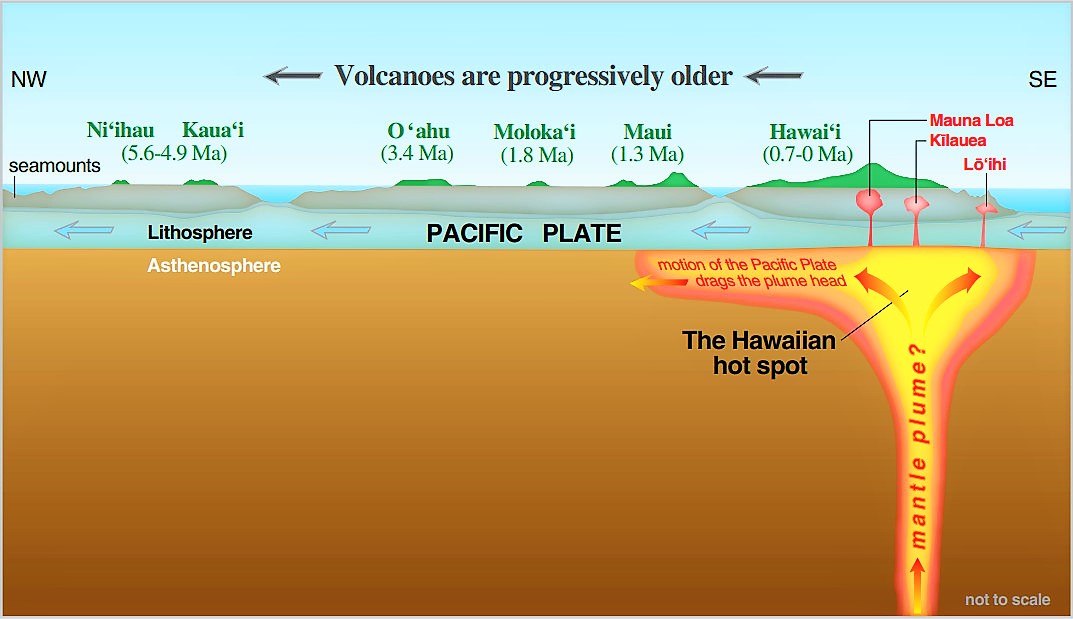
Kaua'i is the oldest of the main Hawaiian Islands at about 5 million years. By contrast, surface lava flows on the Big Island are less than 1 million years old. Kaua'i is also the northern-most island, since the Pacific Plate is moving that direction. The Big Island of Hawaii is farthest to the south, youngest, and currently sitting directly above the Hawaiian hotspot.
The Hawaiian hotspot is roughly 50 miles (80 km) in diameter. Today, one edge of it is below the Big Island, fueling the active eruption of the Kilauea volcano, while another edge is beneath the erupting Kamaʻehuakanaloa volcano (formerly the Lo'ihi Seamount), south of the Big Island and 3,000 feet (914 meters) beneath the ocean's surface. Some scientists estimate that Kamaʻehuakanaloa will rise above the ocean's surface in as little as 10,000 years, while others suggest it will more likely be more than 50,000 years, if at all.
Hawaiian Eruption & Shield Volcanoes
The manner in which lava sort of oozes and flows in a gentle, low-level eruption from Hawaii Island volcanoes is known as a "Hawaiian eruption". Unlike an explosive eruption, a Hawaiian eruption is typical of shield volcanoes. The term shield volcanoes refers to the shield-like appearance of the mountain. As lava spreads out while pouring down the flanks during a Hawaiian eruption, the mountain takes on a shape resembling a giant shield.
The Big Island consists of five coalesced volcanoes, volcanoes whose lava flows have merged to form the island. Three of these (Kilauea, Mauna Loa, and Hualalai) are still close enough to the Hawaii hotspot to be active. A sixth volcano, Mahukona, is the oldest of the Hawaii Island volcanoes, now long extinct and submerged beneath the ocean north of the island.
Types of Lava
There are two distinct types of lava that are known universally by their Hawaiian names, a'a (pronounced äh-äh) and pahoehoe (pä-hoí-hoi). While quite different in appearance, their chemical composition is essentially the same.
A'a lava tends to flow through channels on the surface, whereas pahoehoe often travels through underground tubes. A'a has more crystals and fewer gas bubbles than pahoehoe, the gas bubbles being squeezed out as the lava thickens while cooling. Once cooled, a'a is rough, clumpy and often sharp, making it difficult to walk on. Should you fall on it, you will quickly understand why it is called a'a!
Pahoehoe lava has a smooth, ropy appearance, similar to thick chocolate cake batter. A higher concentration of gas bubbles contributes to the puffy appearance characteristic of pahoehoe lava. Lava tubes are formed when the outer crust of a pahoehoe flow hardens while the river of lava continues to flow inside the tube.
Often the same eruption can produce both pahoehoe and a’a lava. It is also possible for lava that starts out as pahoehoe to change to a’a, as it loses gas and cools while moving farther from the erupting vent. In general, a Hawaiian eruption with a great deal of lava more commonly produces a’a, whereas lesser flows are generally pahoehoe.
Like This Page?
Return to Big Island Volcanoes
Return from Hawaii Island Volcanoes to Explore The Big Island Home Page
